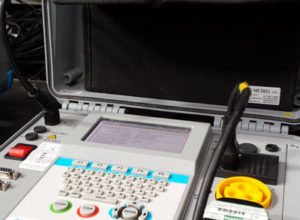A Guide for Sound Systems
Graphic equalizers are indispensable tools in the realm of audio engineering, offering precise control over the frequency spectrum to sculpt the perfect sound.
Whether you’re setting up a live concert, fine-tuning a studio recording, or optimizing audio in a venue, mastering the art of graphic EQs is essential.
This guide aims to provide a comprehensive overview of graphic equalizers, from basic principles to advanced techniques, along with practical case studies, FAQs, and additional resources to help you become a proficient EQ wizard.
Section 1: Understanding Graphic Equalizers
Graphic equalizers divide the audio spectrum into multiple frequency bands, each controlled by a slider. These sliders allow you to boost or cut specific frequencies, shaping the overall sound according to your preferences. Understanding how graphic EQs work and how to interpret their visual representations is fundamental for effective EQing.
Section 2: Setting Up Your System
Proper setup is crucial for getting the most out of your graphic EQ. Ensure it sits in the signal chain after the mixer and before the amplifiers for maximum impact. Use quality cables to maintain signal integrity, and always start with all EQ sliders set to their neutral position.
Section 3: Basic EQ Techniques
Mastering basic EQ techniques is essential for achieving a balanced and clear sound. Learn how to cut or boost frequencies selectively to enhance clarity, tonal balance, and overall sound quality. Understand the effects of cutting versus boosting frequencies and how to avoid common pitfalls like excessive boosting.
Case Study 1: Enhancing Vocal Clarity In a live setting
Vocals can sometimes get lost in the mix. By using a graphic EQ to boost the frequencies corresponding to the singer’s voice, you can enhance vocal clarity and ensure they cut through the mix.
Case Study 2: Balancing Instrument Levels In a studio recording.
Different instruments may compete for sonic space. By judiciously cutting and boosting frequencies using a graphic EQ, you can balance instrument levels and create a cohesive mix.
Section 4: Advanced EQ Techniques
Once you’ve mastered the basics, explore advanced EQ techniques such as dynamic EQ, notch filtering, and stereo imaging. These techniques offer even greater control over the audio signal and can help you achieve professional-grade results.
Section 5: Mixing Tips
Effective communication with performers and understanding their sonic preferences is essential for successful audio mixing. Experiment with different EQ settings during soundcheck to find the optimal sound for the venue and audience.
FAQ Section:
Q: How many bands should a graphic EQ have?
A: Graphic EQs can vary in the number of bands, but common configurations include 15, 31, and graphic EQs. The number of bands determines the precision of frequency control.
Q: Can I use a graphic EQ to fix poor-quality recordings?
A: While a graphic EQ can help shape the sound of a recording, it cannot fully compensate for poor recording quality. It’s best to focus on capturing high-quality audio from the source whenever possible.
Q: What’s the difference between a graphic EQ and a parametric EQ?
A: Graphic EQs divide the frequency spectrum into fixed bands with predetermined frequencies, while parametric EQs offer more flexibility by allowing you to adjust the frequency, bandwidth, and gain of each band independently.
Additional Resources:
“The Mixing Engineer’s Handbook” by Bobby Owsinski
“Mastering Audio: The Art and the Science” by Bob Katz
Online tutorials and videos from reputable sources such as Recording Revolution and Pensado’s Place Audio engineering courses on platforms like Coursera and Udemy
Conclusion:
Mastering graphic equalizers requires a combination of technical knowledge, practical skills, and a keen ear for sound. By following the techniques and case studies outlined in this guide, along with continuous practice and experimentation, you’ll be well-equipped to harness the full potential of graphic EQs and elevate your audio mixing skills to new heights. Happy EQing!
